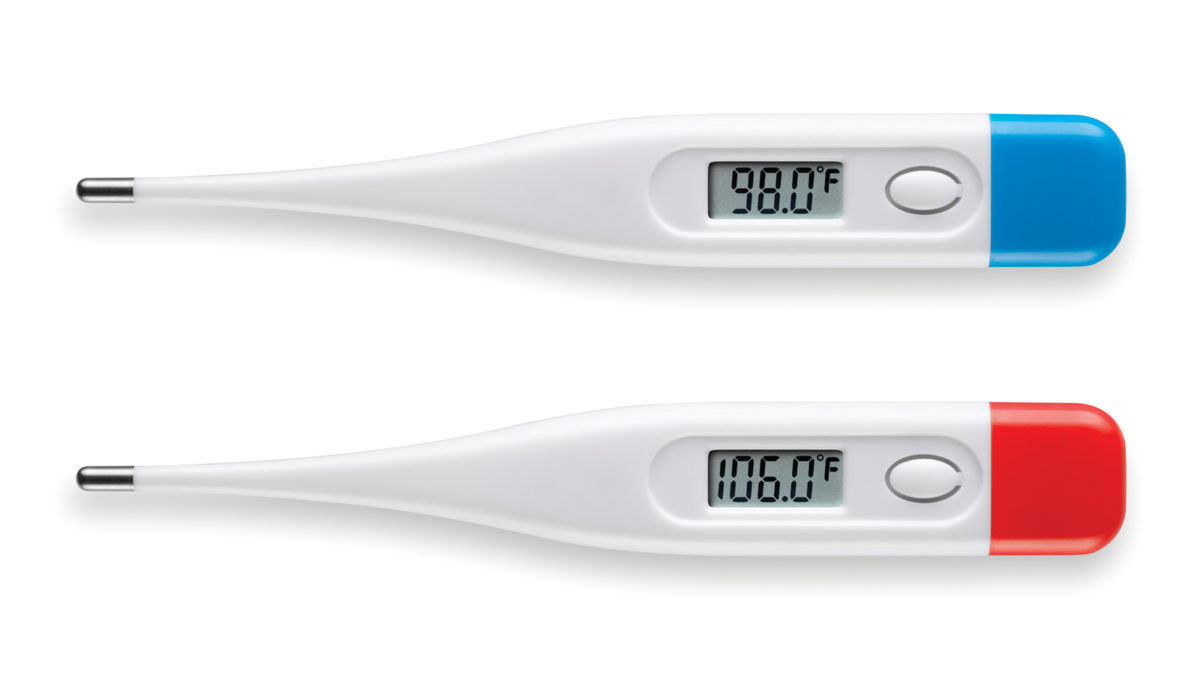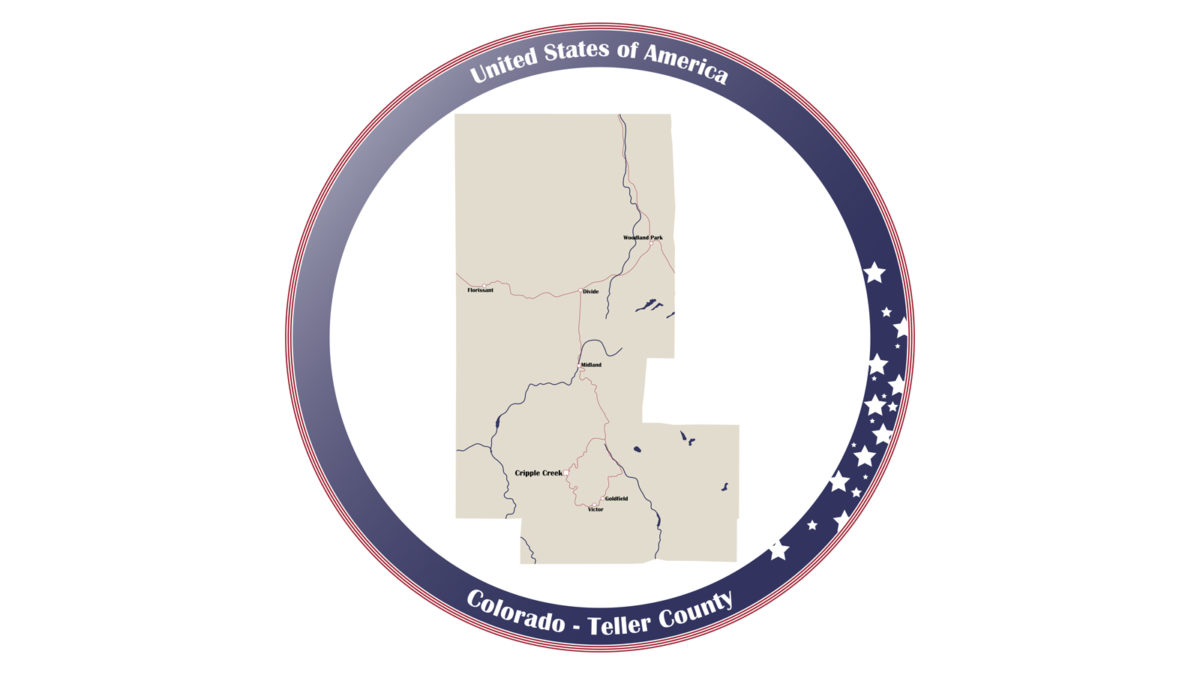
Paid Sick Leave Requirements under the Healthy Families and Workplaces Act
December 2020
Download This Article (.pdf)
This article discusses Colorado’s Healthy Families and Workplaces Act, which creates new paid sick leave requirements for most employers.
In an extraordinary and unique legislative session interrupted and then reconvened, the Colorado General Assembly passed a number of employee benefits bills that will significantly impact employers. The most significant of these bills, the Healthy Families and Workplaces Act (HFWA or Act), was signed into law on July 15, 2020 by Governor Polis.1 With its passage, Colorado became one of only 14 states that mandate paid sick leave, in addition to Washington, D.C.2 and a growing number of cities and counties across the country. Colorado also passed a sick leave provision in response to the COVID-19 pandemic, as did New York.3
The HFWA creates basic paid sick leave requirements for almost all public and private employers in Colorado and establishes two weeks of supplemental paid sick leave in the event of public health emergencies.4 Additionally, the HFWA outlines COVID-19-specific paid sick leave requirements, which operate through the end of 2020.5 Because the COVID-19-specific sick leave provisions will expire at the end of the year, this article focuses on the paid sick leave provisions, both basic and supplemental, that will become effective in 2021.
Basic Paid Sick Leave
The HFWA’s requirements for basic paid sick leave take effect on January 1, 2021. In its first year, the Act will apply to almost all public and private employers with 16 or more employees.6 On January 1, 2022, the exemption for employers with 15 or fewer employees ends and coverage expands to almost every in-state employer.7 When determining their number of employees, employers should count all “‘full-time and part-time employees within the United States,’ ‘employees on leave,’ and employees in ‘separate establishments or divisions’ of the business.”8
Accrual and Payment
Under the Act, employees must accrue at least one hour of paid sick leave for every 30 hours worked.9 Accrual begins at the start of employment, and the sick leave can be used immediately,10 with employers maintaining the ability to “loan” paid sick leave to employees before its accrual.11 Usage and accrual caps at 48 hours per year,12 and up to 48 hours of accrued time can roll over at year’s end.13 For exempt employees, the accrual rate assumes a 40-hour work week.14 However, if an employee works fewer than 40 hours per week, the accrual rate reflects the hours of the employee’s normal work week.15
Employees must use their accrued sick leave in hourly increments, unless the employer allows the use of smaller increments.16 When leave is used, employers must pay at least the applicable minimum wage,17 with leave paid at the same hourly rate or salary and with the same benefits that an employee normally earns.18 Employees who receive commission- or sales-based pay should receive the greater of either the minimum wage rate or their hourly or salaried rate.19 Notably, employers do not need to include overtime, bonuses, or holiday pay when calculating the hourly or salaried rate.20
Employer Exemptions and Changes in Employment
In addition to the temporary exemption expiring in 2022 for employers with 15 or fewer employees, the HFWA creates a permanent exemption for federal government employees21 and employees subject to the federal Railroad Unemployment Insurance Act.22 Further, employers under collective bargaining agreements may be exempt from specific HFWA provisions if a collective bargaining agreement already provides for and does not diminish employees’ rights to “equivalent or more generous” paid sick leave.23
Employers with a broader paid leave policy (i.e., allowing paid time off for any purpose) can also comply with the HFWA, but only if the policy provides at least the same amount of time off, allows paid time off for all conditions and situations covered by the HFWA, and matches the Act’s accrual rate.24 In other words, employers that offer a more generous paid leave policy do not need to provide additional basic paid sick leave. When making this determination, however, employers should carefully consider whether their time-off policies for temporary, seasonal, and part-time workers adhere to HFWA guidelines.
The HFWA explains how certain changes in employment affect employees’ accrued time. First, an employer does not need to reimburse accrued sick leave after an employee’s termination, resignation, retirement, or separation.25 Second, if an employee transfers to a different division or location but maintains the same employer, the employee keeps any accrued paid sick leave.26 Lastly, in the event of a business’s acquisition, employees are entitled to the sick leave accrued under their original employer.27
Sick Leave Usage
Employees are entitled to paid sick leave in a broad range of situations set forth in the HFWA and may request leave orally, in writing, electronically, or via any other means acceptable to the employer.28 Employees can use accrued leave when a mental or physical illness, injury, or other health condition prevents them from working, or to obtain medical diagnoses, care, or treatment as well as preventative medical care.29 The HFWA also allows employees to use sick leave to care for a family member with a mental or physical illness, or to help a family member get medical services.30
Sick leave must also be allowed when an employee or an employee’s family member has been the victim of domestic abuse, sexual assault, or harassment.31 In such situations, sick leave may be used to seek medical attention, victim or legal services, or mental health counseling, or to relocate.32 The HFWA also specifies that sick leave can be used when a public health emergency closes an employee’s place of business, or closes schools and other child-care facilities, and an employee needs leave to care for a child.33
For all the above-described situations, an employer cannot condition paid sick leave on disclosure of details related to an employee or employee’s family member’s health information, or the domestic violence, sexual assault, or harassment.34 If an employee divulges health or safety details about themselves or family members, this information must be treated as confidential and stored in a file separate from the employee personnel files.35
Foreseeable and Extended Absences
If an absence is foreseeable (i.e., scheduling preventative care), the HFWA requires that employees make a good faith effort to notify their employer, include the absence’s duration in the notification, and attempt to schedule their absence in a way that minimizes disruption to the business.36 An employer may create reasonable procedures for notification of foreseeable employee absences, though paid sick leave cannot be denied due to noncompliance with those policies.37 And an employer may not condition sick leave on an employee finding a replacement worker during the employee’s absence.38
If an employee needs to miss more than four consecutive days at work, the employer can request reasonable documentation.39 Notably, this documentation is not necessary for an employee to take paid sick leave, but it can be required as soon as an employee can reasonably provide it. Because only “reasonable documentation”40 can be required and leave cannot be conditioned on disclosure of specific health or safety details, an employee only needs to show a valid reason for the extended leave.
Public Health Emergency Supplemental Sick Leave
In addition to basic sick leave, the HFWA provides supplemental leave for public health emergencies.41 The Act defines a public health emergency as “an act of bioterrorism, a pandemic influenza, or an epidemic caused by a novel and highly fatal infectious agent” for which an emergency is declared by the governor or a federal, state, or local public health agency;42 or “a highly infectious illness or agent with epidemic or pandemic potential for which a disaster emergency is declared by the governor.”43
For employees who work 40 hours or more per week, the HFWA allows 80 hours of paid supplemental sick leave per year for public health emergencies.44 Forty-eight of the 80 hours must be provided for any HFWA-approved purpose, emergency or not, while the remaining 32 hours are reserved for emergency-related purposes.45 Employees who work less than 40 hours per week should receive leave equal to or greater than either the time they would be scheduled in a 14-day period or the average amount of time they work across 14 days.46
This supplemental paid sick leave becomes available to use from the start of the public health emergency and continues until four weeks after the public health emergency’s termination.47 However, the supplemental time may only be used once during a public health emergency, regardless of whether the public health emergency is extended, reinstated, amended, or prolonged.48 Significantly, an employer may count employees’ unused accrued paid sick leave toward the supplemental paid sick leave requirement.49
The HFWA allows the supplemental sick leave to be used for various reasons.50 Employees may use leave for time spent self-isolating (either due to a specific diagnosis or manifestation of symptoms of the illness causing the public health emergency), or for preventative care.51 They can also use it to care for family members who are self-isolating or to help family members get medical diagnoses, medical or preventative care, or treatment.52
If a public health emergency arises from a contagious disease, the supplemental leave can be used when the employer or governmental or health officials determine that an employee’s presence may jeopardize others, regardless of a formal diagnosis.53 Employees may also use supplemental leave if they have health conditions that make them susceptible to the disease creating the emergency.54 Finally, employees may take leave to care for family members who have been identified as health risks, or to care for children or other family members when the emergency closes schools or other child-care facilities.55
In contrast with basic sick leave, where an employer can require documentation in the event of an absence spanning four days or more, no documentation is required to use the supplemental sick leave reserved for public health emergencies.56 However, like the policies for basic sick leave, the HFWA imposes a responsibility on employees to give employers notice for foreseeable absences, assuming the employer’s place of business is not already closed.57
Retaliation
The HFWA gives employees the right to use paid sick leave, and employers may not retaliate or discriminate against an employee for its use.58 For example, an employer cannot treat sick leave as an absence to support an employee’s discipline, discharge, demotion, or suspension.59
Under the HFWA, employees also have the right to file complaints or inform anyone about an employer’s alleged violations, cooperate in violation investigations, and inform others about their rights under the HFWA.60 As such, employers cannot retaliate or discriminate against present or former employees for exercising these rights.61 These protections cover any person acting in good faith, even if their allegations against an employer are mistaken.62
Notice
Employers must notify employees of the new HFWA sick leave provisions. This notice includes both (1) an employer’s written notice, and (2) the permanent display of a poster containing key information,63 which is to be created and furnished by the Colorado Department of Labor and Employment (CDLE).64
The employer’s written notice must specify the amount of sick leave to which employees are entitled and formally acknowledge that employers may not retaliate against employees for their requests for or use of sick leave.65 This notice must also inform employees of their right to file complaints or bring civil actions in the event of a violation or retaliation.66 The notice must be written in English and any other language spoken as a first language by at least 5% of the workforce.67
The poster must give notice of the HFWA paid sick leave requirements. It must be placed in a conspicuous and accessible location in each location where employees work.68
When an employer lacks a physical workplace or when employees work remotely, employers can meet the notice requirements through electronic communications or by conspicuous posting on a web-based platform.69
Willful violations to provide written notice or display posters can result in civil fines not exceeding $100 for each separate violation.70 However, when a business is closed due to a disaster or public health emergency, the notice requirements are waived until the business reopens.71
Recordkeeping
The HFWA requires that employers “retain records for each employee for a two-year period, documenting hours worked, paid sick leave accrued, and paid sick leave used.”72 These records may be accessed to monitor an employer’s compliance with the HFWA.73 If these records are not adequately maintained, an assumption of a violation arises, unless the employer can demonstrate its compliance by a “preponderance of the evidence.”74
As noted above, the HFWA requires employers to take special precautions with employees’ health and safety information, particularly when it comes to recordkeeping. Any disclosed health or safety information about employees or their family members must be treated as confidential and maintained in files separate from other personnel records.75 Further, these records cannot be disclosed to anyone other than the employee unless the employee gives express permission.76
Violations
The HFWA gives CDLE’s Division of Labor Standards and Statistics (Division) the ability to investigate sick leave denial and retaliation claims.77 Employees can file complaints with the Division for unpaid wages of up to $7,500.78 Upon finding that a violation ended in an employee’s termination or loss of pay, the Division can order the employee’s reinstatement, compensation for lost pay until reinstatement, or compensation for pay for a reasonable time if reinstatement isn’t feasible.79 If an investigation finds that an employer violated multiple employees’ rights, each employee claim constitutes a separate violation for purposes of imposing fines.80
An employee may commence a civil action in state district court no later than two years after a violation occurs.81 However, before filing a civil suit, the employee must submit a complaint to the Division or a written demand for compensation.82 After submitting a complaint or written demand, the employer has 14 days to respond.83 Notably, for purposes of the statute of limitations, each time an employee is denied sick leave or retaliated against constitutes a separate violation.84
Conclusion
In January 2021, all non-exempt Colorado employers with 16 or more employees will be required to provide one hour of basic paid sick leave for every 30 hours worked. The following year, regardless of their staff size, all employers covered by the Act must provide basic paid sick leave at the same accrual rate. The HFWA also establishes two weeks of supplemental paid sick leave for workers during public health emergencies. To ensure compliance, Colorado businesses should familiarize themselves with the new requirements for both basic and supplemental paid sick leave and carefully examine the HFWA’s provisions for notice, recordkeeping, and retaliation.
Related Topics
Notes
1. Healthy Families and Workplaces Act, SB 20-205, 72nd Gen. Assemb., 2nd Reg. Sess. (Colo. 2020), creating CRS §§ 8-13.3-401 et seq.
2. Paid Sick Leave, Nat’l Conference of State Legislatures (July 21, 2020), https://www.ncsl.org/research/labor-and-employment/paid-sick-leave.aspx.
3. Id. (noting that other states with paid sick leave mandates include Arizona, California, Connecticut, Maine, Maryland, Massachusetts, Michigan, Nevada, New Jersey, New York, Oregon, Rhode Island, Vermont, Washington, and Washington, D.C.).
4. CRS § 8-13.3-405.
5. CRS § 8-13.3-406.
6. CRS § 8-13.3-403(1)(b).
7. CRS § 8-13.3-403(1)(c).
8. The analysis to determine an employers’ number of employees aligns with the existing Emergency Paid Sick Leave Act standards in the Families First Coronavirus Response Act. CDLE, Division of Labor Standards and Statistics, Interpretive Notice & Formal Opinion (“Info”) #6B n.6 (2020) (hereinafter Info), https://www.colorado.gov/pacific/sites/default/files/INFO%20%236B_%20Paid%20Leave%20under%20the%20Healthy%20Families%20and%20Workplaces%20Act%2C%20as%20of%201_1_21%20%283%29_1.pdf.
9. CRS § 8-13.3-403(2)(a).
10. CRS § 8-13.3-403(3)(a).
11. CRS § 8-13.3-403(6).
12. CRS § 8-13.3-403(2)(a).
13. CRS § 8-13.3-403(3)(b).
14. CRS § 8-13.3-403(2)(c).
15. Id.
16. CRS § 8-13.3-404(3).
17. CRS § 8-13.3-402(8)(a)(II)(B) and (C).
18. CRS § 8-13.3-402(8)(a)(I)(A).
19. CRS § 8-13.3-402(8)(a)(II)(B) and (C).
20. CRS § 8-13.3-402(8)(a)(II)(A).
21. CRS § 8-13.3-402(5)(b).
22. CRS § 8-13.3-402(4).
23. CRS § 8-13.3-415(2).
24. CRS § 8-13.3-403(4).
25. CRS § 8-13.3-403(5)(a).
26. CRS § 8-13.3-403(7).
27. CRS § 8-13.3-403(8).
28. CRS § 8-13.3-404(2).
29. CRS § 8-13.3-402(1)(a).
30. CRS § 8-13.3-402(1)(b).
31. CRS § 8-13.3-402(1)(c).
32. Id.
33. CRS § 8-13.3-402(1)(d).
34. CRS § 8-13.3-412(1).
35. CRS § 8-13.3-412(2).
36. CRS § 8-13.3-404(5).
37. CRS § 8-13.3-404(2).
38. CRS § 8-13.3-404(4).
39. CRS § 8-13.3-404(6).
40. Id.
41. CRS § 8-13.3-405.
42. CRS § 8-13.3-402(9)(a).
43. CRS § 8-13.3-402(9)(b).
44. CRS § 8-13.3-405(1)(a).
45. Info, supra note 8 at 2.
46. CRS § 8-13.3-405(1)(b).
47. CRS § 8-13.3-405(2)(b).
48. CRS § 8-13.3-405(4)(c).
49. CRS § 8-13.3-405(2)(a).
50. CRS § 8-13.3-405(3).
51. CRS § 8-13.3-405(3)(a)(I)–(IV).
52. CRS § 8-13.3-405(3)(a)(V).
53. CRS § 8-13.3-405(3)(b)(I).
54. CRS § 8-13.3-405(3)(d).
55. CRS § 8-13.3-405(3)(b)(II) and (3)(c).
56. CRS § 8-13.3-405(4)(b).
57. CRS § 8-13.3-405(4)(a).
58. CRS § 8-13.3-407.
59. CRS § 8-13.3-407(2)(b).
60. CRS § 8-13.3-407(1)(b)–(d).
61. CRS § 8-13.3-407(2)(a).
62. CRS § 8-13.3-407(3).
63. CRS § 8-13.3-408(2).
64. Info, supra note 8 at 4.
65. CRS § 8-13.3-408(1).
66. CRS § 8-13.3-408(1)(b).
67. CRS § 8-13.3-408(2)(a).
68. CRS § 8-13.3-408(2)(b).
69. CRS § 8-13.3-408(6).
70. CRS § 8-13.3-408(4)(a) and (b).
71. CRS § 8-13.3-408(5).
72. CRS § 8-13.3-409(1).
73. Id.
74. CRS § 8-13.3-409(2).
75. CRS § 8-13.3-412(2)(a) and (b).
76. CRS § 8-13.3-412(2)(c).
77. CRS § 8-13.3-407(4).
78. Info, supra note 8 at 4.
79. CRS § 8-13.3-407(5)(b).
80. CRS § 8-13.3-407(5)(a).
81. CRS § 8-13.3-411(4)(a).
82. CRS § 8-13.3-411(4)(d).
83. Id.
84. CRS § 8-13.3-407(5)(a).
In its first year, the Act will apply to almost all public and private employers with 16 or more employees. On January 1, 2022, the exemption for employers with 15 or fewer employees ends and coverage expands to almost every in-state employer.


